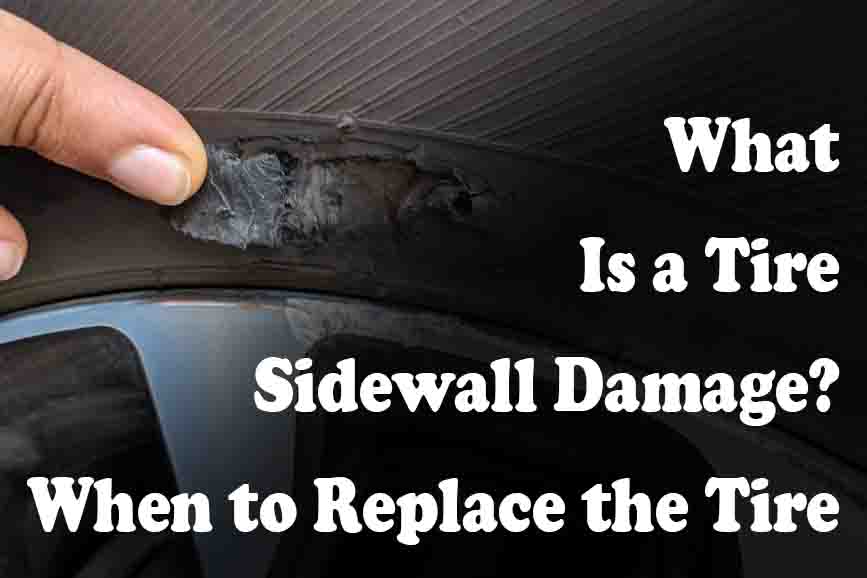Tire sidewalls are usually composed of rubber which can degrade over time. While this doesn’t mean your tire is completely useless, it does mean that your vehicle will need to be serviced soon.
A great way to identify if your tires are beginning to wear down is to check for cracks and other damage on the tire sidewalls. These kinds of problems could indicate the life of your tire has come to an end. You should always keep in mind that the tread of the tire is where the majority of your driving force comes from.
If you notice any damage to the sidewalls, then take your car to a trusted mechanic. They’ll be able to tell you how old your tires are, and give advice about when it would be a good idea to replace them.
Table of Contents
What Is a Sidewall Tire Damage?
Tires have two parts. The first part is the rim. This is the wheel itself. Then, there’s the second part of the tire. That’s the tread area.
When you look at tires, you might notice that they seem to be made up of three different sections. There’s the white section, the black section, and the gray section.

The white section is where the rubber meets the road. It helps to keep your car on the ground when you’re driving. The black section covers the rest of the tire.
You can usually spot a dented tire by seeing a deep scratch or a bubble on the tire. Whether it was a small car accident or you drove too close to the curb. It could also happen if you hit a bump in the road or something like that. Side wall damage is really bad to drive around with and now we’ll explain why.
Is It Safe to Drive on a Tire with Sidewall Damage?
A sidewall tire damage isn’t safe to drive around with. The sidewalls of the tires are much more sensitive than the tread area. This problem is so common that it’s known as the tire death trap. And in many cases, the damage is extensive enough that the whole tire must be replaced.
This is also dependent on the size of the crack or damage that you are dealing with. Scratches are generally not big deals, unless the scratches are large, deep and penetrate the entire surface of the seat.
How Much Tire Sidewall Damage Is Too Much?
To find out how much damage your tires have sustained, measure the distance from the rim to the center of the tread. If the distance is less than one inch, the tires are worn out.
Some tires have multiple layers and threads, and some don’t. Regardless of what kind of tire you have, you want to make sure you see if there are any leaks inside the tire or damage.
If there’s an air-bubble on the tire’s sidewall, you should immediately replace it because there is a big risk that it will blow at any moment.
You should make sure that nothing serious happens to your tire by taking it to an expert.
Ask the mechanic where the repair shop that is not selling tires is located and then go there. If you go to a repair shop that is selling tires, it is a very good chance that they will sell you new tires.
Can You Repair a Sidewall Tire Damage?
It’s a common problem for new tires; they tend to have sidewall damage or cracks from improper inflation.
It doesn’t matter if the sidewall has a small bubble; it’s not repairable. Fixing them will only lead to the tire becoming more and more flat.
The only time you should glue your sidewall is if it is a super shallow scratch that is not reaching the threads.
However, if the scratch or damage is this shallow, it makes no sense to fix it by gluing, so I would say that you should never glue a sidewall tire damage.
Causes of a Tire Sidewall Damage
There are many things that could cause tire sidewall damage. It was mostly because of sharp objects that you were hitting with the sidewall of the tire that had been hit with. Air can also build up in your tires, which can cause your car to have a flat tire.
Sidewall damage caused by hitting a curb or hitting a pothole is the most common cause of tire sidewall damage.
